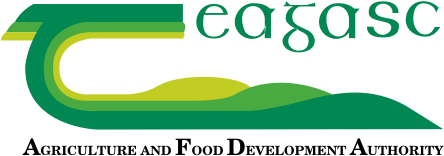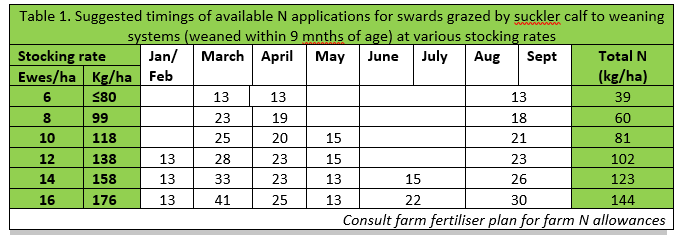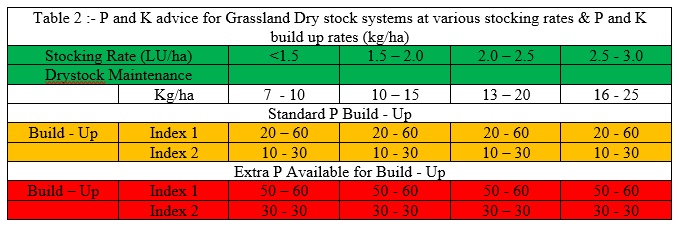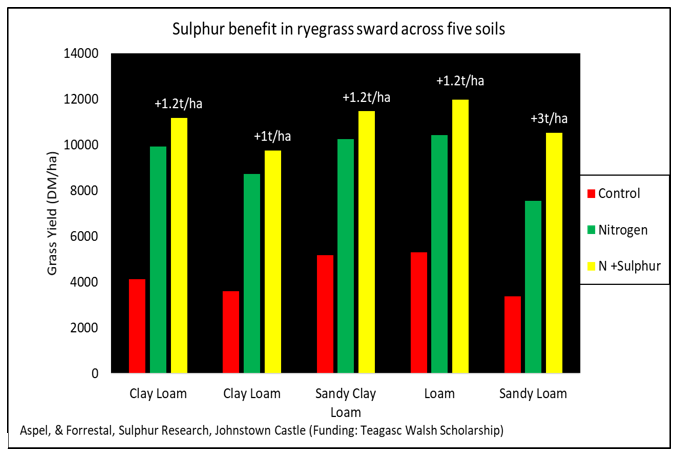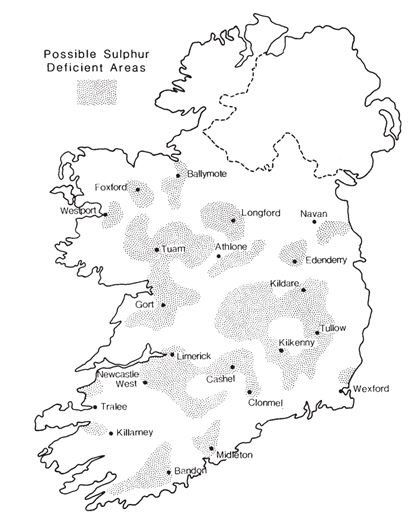Grassland
Sheep
Nitrogen (N) fertiliser advice sheep grazing
Table 1 gives guideline rates for N applications on sheep pasture with normal to low clover content for a range of stocking rates. The suggested timetable applies to ewes with high productivity assuming that no concentrates are offered at pasture. The N timetable is for early to mid-March lambing, but depends on several factors including overall farm system, soil, climatic conditions, clover content etc.
See link to Early N Advice Guidelines for efficient use & response//www.sedplay.com/publications/2022/when-to-apply-early-nitrogen-n.php
N要求一般都是吃草的羊群lower than for dairy cows or cattle. This is because:
- Less silage is required for sheep than for cattle due to the shorter in-wintering period
- Sheep recycle dung/urine more uniformly to pasture and hence there is less herbage waste around dung-pats and, consequently, more efficient herbage utilisation (more uniform post-grazing height and less high grass left ungrazed)
- There is a better match between feed demand and herbage growth because feed demand is highest from lambing to weaning (March to early July). It decreases post weaning as lambs are drafted for sale and ewes can be restricted to maintenance feeding
- Clover survival can be encouraged by rotational grazing rather than continuous sheep grazing as sheep preferentially graze clover plants.
Nitrogen (N) requirements for pasture
- There is no reliable soil test currently available for N. Therefore, there is no soil Index system for N in grassland.
- Recommendations are based on average soil fertility levels.
- Total N application and on the farm and time of application must be compliant with nitrates regulations.
- Matching nitrogen fertilizer use to stocking density on the farm at different times of the year avoids excessive use.
- Applying nitrogen fertilizer ‘little and often’ during the growing season gives most efficient response in terms of grass growth.
Phosphorus (P) for drystock grazed swards*
- Rates shown must be deducted to account for P fed to livestock in concentrate feeds
- Adjust rates based on slurry management as per fertiliser plan.
- To account for P in concentrate feeds, use either actual P content in the feeds used if available, or alternatively, use a default value of 5 kg of P per tonne of concentrate feed.
- Complete a farm fertiliser plan to determine farm N & P allowances
Fertiliser Values for Cattle Slurry
Sulphur
Figure 1. Grass yield responses to sulphur applied on a range of soil types. Grass yield responses to S range from 1.0 to 3t/ha from heavy to light soil types.
- Sulphur (S) is an important nutrient for grassland, and is closely associated with N uptake and efficiency.
- There is currently no soil test or soil Index system for S.
- Herbage analysis is the best predictor of S deficiency.
- Lighter soils with low organic matter contents are generally more prone to S deficiency.
Figure 2. Map indicating areas of possible S deficiency
S fertiliser advice
- The response to S fertiliser increases as the rate of N fertiliser increases.
- 在年代deficient soils, apply 20 kg/ha per year for grazed swards.
- For silage swards on S deficient soils, apply 20 kg/ha of S per cut.
- Avoid S application to soils not deficient in S, as excess S may affect the trace element nutrition of plants and animals.
- S can be applied by using any of a number of straight or compound fertilizers that contain S.
- Aim to apply S containing fertilisers from March / April to June.
